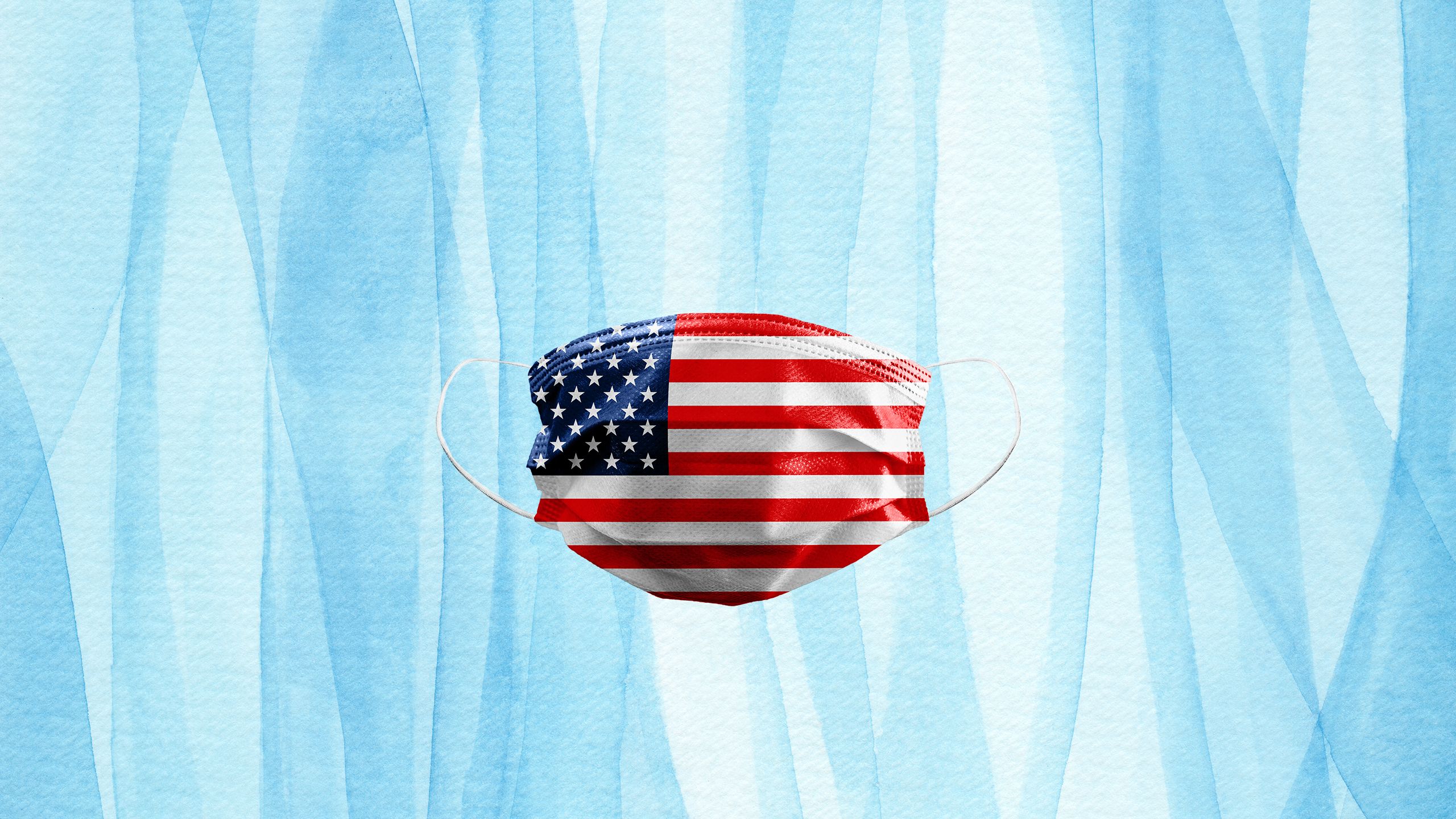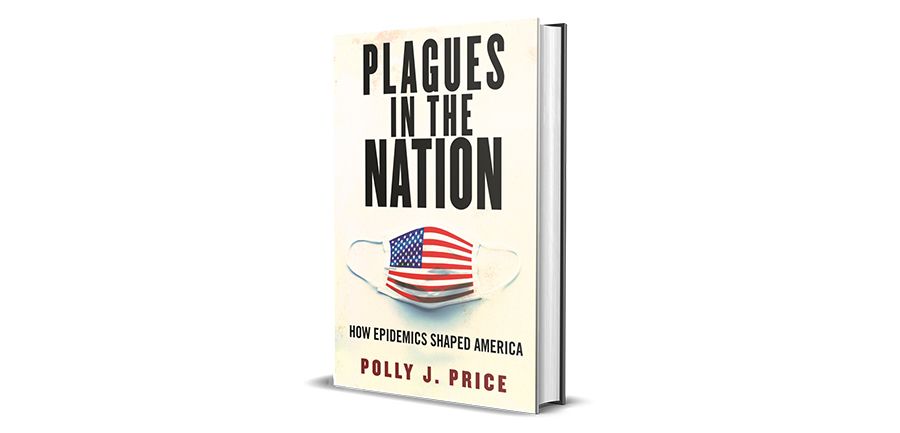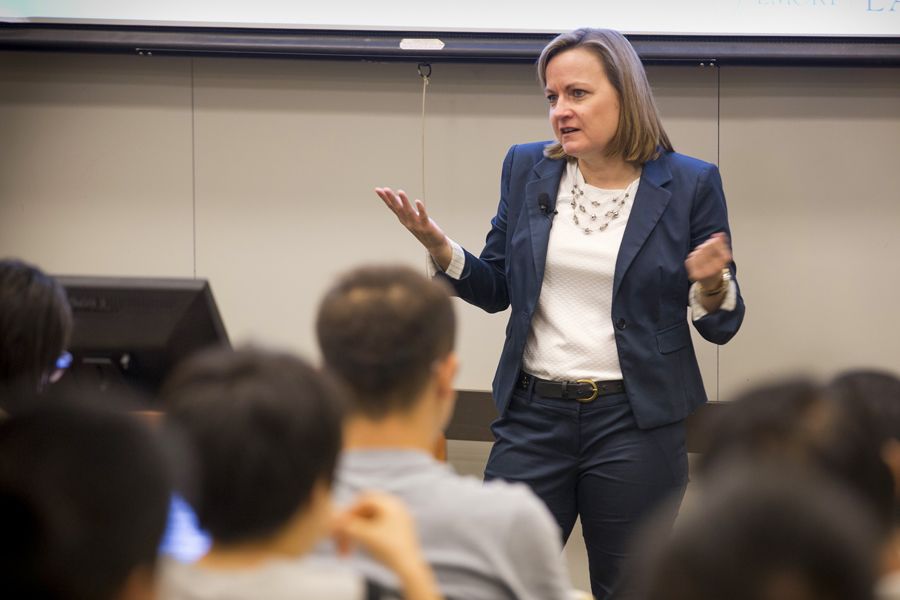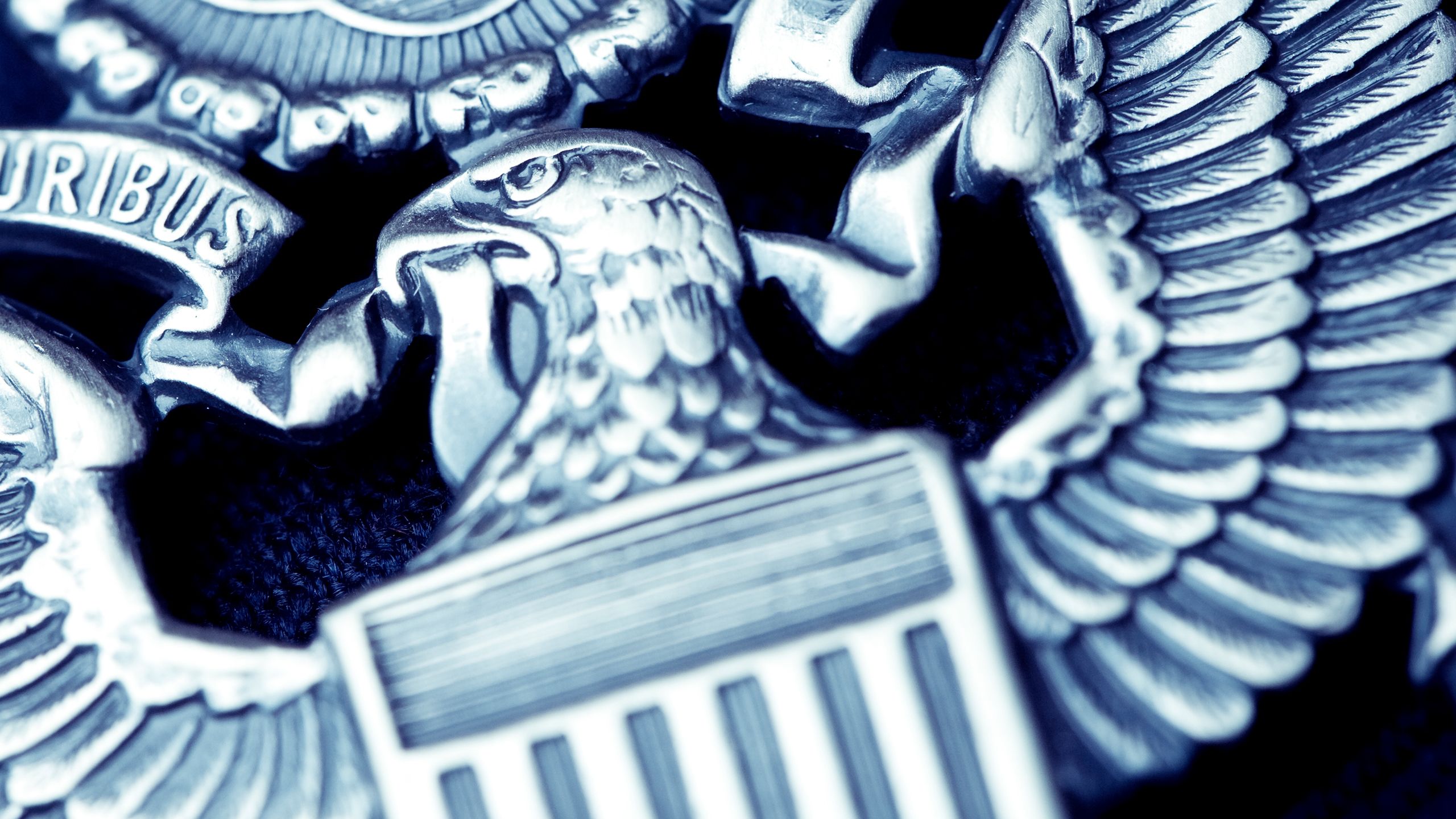WHAT WE CAN LEARN FROM AMERICA'S PANDEMIC RESPONSES
Polly Price, author of Plagues in the Nation: How Epidemics Shaped America, sheds light on how the US has handled major outbreaks throughout history—from smallpox to COVID-19—and how we can use these lessons to prepare for the next one.


As COVID-19 still grips the world more than two years after it became a pandemic, we’re still processing how we got here. A new book by Polly J. Price, an Emory University professor of law and global health, closely examines the history of the government and legal responses to epidemics in the US and how our policies have both succeeded and failed in protecting citizens from deadly disease.

“While Plagues in the Nation: How Epidemics Shaped America is primarily a work of history, that history suggests several ways we can improve our government’s ability to fight epidemics,” Price writes. “Our best chance depends on effective governance, trust in our scientific institutions, and changes to outmoded laws that still regulate our public health system. We must not waste the opportunity to repair what we can of our legal infrastructure and institutions to make government more responsive, with less conflict.”
A Kirkus starred review called Price’s book “an authoritative history of America’s flawed responses to epidemics,” and Publisher’s Weekly termed Plagues in the Nation “an essential study of what needs to change before the next epidemic.”
Emory Magazine sat down with Price, an Andrew Carnegie Fellow, to discuss how she came up with the idea for the book—long before COVID-19 struck—and some of the key lessons she learned from America’s troubled responses to epidemics throughout history.
Q: Before you received the Andrew Carnegie Fellowship in 2017, you already were thinking about the matters that would become your book. What did this project entail?
A: Based on my historical work examining prior epidemics, I began to think about how our legal and governmental system would respond in the event of a new one. I thought we had a chance to get our house in better order before one strikes, as the scientists have long predicted. However, I also knew that we were working with laws that, to the extent they worked well at all, were in many cases more than 100 years old and were designed for local circumstances, not a national strategy. I knew it was going to be a big challenge. We already were barely holding on with regard to keeping tuberculosis (TB) and other contagious diseases at bay. HIV and TB, especially the drug-resistant variety, remain significant problems. In 2018–2019, an outbreak of hepatitis A (linked to poor public sanitation) spread relentlessly across two-thirds of the country from local outbreaks that began in California in 2017.
Q: You are uniquely qualified to write a book examining the intersection of law and public health. In 2013, you were one of six professors chosen for the Robert Wood Johnson Foundation’s Scholar-in-Residence Program in public health law. What did you learn during your time in this program?
A: While based in El Paso, Texas, I worked with the Centers for Disease Control and Prevention’s (CDC) Division of Global Migration and Quarantine, the Texas Department of State Health Services, and the US-Mexico Border Health Commission to study TB-control measures along the southern US border.
Several public health departments in a small area have to coordinate with one another both domestically and also across the border with Mexico. I learned so much that summer following people around, seeing how local health departments worked together, for example, in contact tracing with people who had been exposed to TB. What are the laws, rules, and government policies that prevent health professionals from working more closely together? It is far more complicated on the US side. There are more than 2,500 public health departments in the US, and any outbreak is typically not contained in just one of them. We have one of the most decentralized public health systems in the world—and it showed during the COVID-19 pandemic.
Q: You have acknowledged a debt to Emory and its experts as you undertook Plagues in the Nation. How was your Emory network helpful?
A: Emory health care leaders Carlos del Rio and Jim Curran were especially helpful to me when I had questions about medical matters. Following the Robert Wood Johnson Fellowship, I published an opinion in the New York Times about TB and the difficulty in controlling it through our network of local health departments. I was contacted by people at Emory who work in this area and that led to my appointment at Rollins as a professor of global health. I now work with the Emory Antibiotic Resistance Center and the Emory Tuberculosis Center. It is one of the strengths of Emory, to work across disciplines. It is a way for me to see law in action, to learn what is an impediment and what can be done better. In many cases, a particular problem is not one that law can resolve. In those instances, we have to recognize policy options and find ones that work.

THE POLLY J. PRICE FILE
Polly J. Price is Asa Griggs Candler Professor of Law at Emory School of Law and Professor of Global Health in Emory's Rollins School of Public Health.
In 2017, Price was named an Andrew Carnegie Fellow, a distinction awarded to a small group of scholars, journalists, and authors whose work addresses the most pressing issues of our day and serves to strengthen US democracy.
Price’s scholarship has been recently recognized with the 2019 Hughes-Gossett Award from the US Supreme Court Historical Society, and in 2016 she was invited to deliver the Leon Silverman Lecture at the US Supreme Court.
She is a 1986 Phi Beta Kappa graduate of Emory College, where she earned both bachelor’s and master’s of arts degrees with highest honors, including a year of study in Scotland at St Andrews University on the Bobby Jones Scholarship. Price earned her JD with honors from Harvard Law School in 1989.
“This book tells stories that explain some of that crisis of trust [in governmental institutions]. It also, however, offers grounds for hope that we, the people, have the wisdom we need to overcome the plagues in our nation, present and future.”
— Polly J. Price, Asa Griggs Candler Professor of Law and a professor of global health at Emory

Q: What are the main arguments of Plagues in the Nation?
A: It is important to understand, as a historical matter, where we have been. Not just how we have responded in the past to different kinds of public health emergencies but how those responses, in turn, shaped what we expect and think we can do in the future. Before COVID-19 hit, we had become somewhat self-satisfied. We need to rethink old laws and government structures based on new circumstances.
Another large part of what I cover is how decentralized our public health system is and the fact that you get what you pay for. The US has decreased spending locally for public health. In the early part of the 20th century, it was the opposite. We have a situation in this country where any local health department can become the weakest link and thus becomes our nation’s weakest link. How do we improve that situation? There are some things that the federal government is better at, and we must come to agreement about the federal role to ensure, as one important factor, fair distribution of limited resources.
Q: Your first submissions to your publisher were before COVID-19 struck. Describe how its arrival altered the book.
A: COVID-19 changed the book for the better because it focused me more specifically on what historical episodes I wanted to relate. With regard to COVID-19, I thought it was terribly important for people to know the conflict and chaos we saw isn’t new. Contagious diseases and epidemics have long created political and economic crises and have fallen disproportionately on persons of color and the poor. Our response is inevitably a political one because we depend on elected leaders to protect their constituents.
Q: Your expertise notwithstanding, you—like many of us—were learning as you went along during the pandemic. You confess to having a few deer-in-the-headlights moments. Tell us about one of them.
A: What surprised me and many other observers was that all 50 state governors declared states of emergency that lasted well over a year and then issued public health orders under those. A state of emergency is generally reserved for a natural disaster like a hurricane—something more short-lived. So there was not much legal precedent to guide this use of governors’ authority.
Early in the pandemic I got a call from the National Governors Association, from the attorneys who advise governors. As we know, there was insufficient personal protective equipment (PPE) during the pandemic’s first year. President Trump had said the states were on their own to acquire PPE. The lawyers wanted to know: Can state governors band together to purchase these supplies, or is that an antitrust violation? My answer was that they did have this authority, and a number of regional coalitions joined together for enhanced purchasing power. However, the federal government could have done much more through its purchasing power. Instead, the states—and even down to the level of cities and hospitals—competed against each other and drove up prices.
Q: Who is the audience for the book?
A: I crafted this book to appeal to voters—the educated public who will find the history of epidemics illuminating to help judge our current and future responses. Prior to COVID-19 at least, most people did not think of government and legal issues when they thought of epidemic disease, but health emergencies present a crisis not only for doctors and public health officials but also for lawyers and politicians. Public health becomes “political” as constituents demand governmental response—or demand that it not respond in a particular way. We have lacked the political will to fix problems evident in the past.
Q: Throughout the book, you argue for a greater federal role. At the conclusion, you offer a wish list. Walk us through that list.
A: Among my recommendations are three items:
1. The US Congress should clarify the provision from the 1944 Public Health Service Act authorizing federal rules to prevent the spread of contagious disease across state lines. The law actually dates back to 1890 and needs updating to ensure that, in a pandemic emergency, the federal government can respond adequately, especially for interstate travel.
2. The CDC must have greater insulation from political control to increase confidence in its recommendations and emergency standards for the nation. The Federal Reserve, whose governance structure is divided regionally and has a degree of political independence, might be a good model. If the nation’s primary health agencies were to be coordinated under such a model, the public might find guidance during a pandemic more acceptable.
3. Congress must ensure that the nation can rapidly produce and distribute essential medical supplies. The national pandemic influenza stockpiling program proved woefully inadequate for such basic supplies as masks and PPE for frontline workers. In addition, Congress must ensure that the costs of testing and treatment during an epidemic are covered—and covered equitably.
Q: Effective messaging in a health crisis is so critical. During COVID-19, that has been a weakness. How do we do this better next time?
A: Public health departments are already strategizing on ways to be more effective. At the national level, the CDC will need to repeat and repeat its message, which also needs to be backed up by government officials at every level. Americans have argued about plenty of things in past health emergencies, but the split along party lines with the arrival of COVID-19 was unprecedented in our history. The COVID-19 information the average citizen received was filtered through their political party of choice, making agreement on any course of action highly charged.
Q: In a book that provides sober analysis of plagues in this country, you conclude your acknowledgments on a lighter note. What did you say?
A: Instead of the standard “all errors remain my own” after thanking those who helped me, the last sentence in the book owns up to possible error a bit playfully, saying, “I take responsibility for any errors in the book but submit in my defense that they crept in unseen and unexpectedly—like a plague.”
OF PLAGUES AND PRESIDENTS
James K. Polk died of cholera in 1849, shortly after he left office, and was hastily buried in a Nashville cemetery set aside for cholera victims.
Franklin D. Roosevelt signed the Public Health Service Act in 1944. The law modernized the US Public Health Service and coordinated its various functions. Roosevelt contracted polio as an adult, more than two decades before a polio vaccine was available.
Dwight Eisenhower brokered a deal to overcome an intransigent Congress and provide funding to establish the CDC. He also signed the Poliomyelitis Vaccination Assistance Act in 1955, the first federal involvement in immunization funding since a short-lived smallpox vaccination program that President James Madison signed into law in 1813.
Ronald Reagan established the President’s Commission on the HIV Epidemic in 1987, six years after the outbreak began.
George H. W. Bush signed into law the Ryan White Comprehensive AIDS Resources Emergency (CARE) Act, providing critical financial assistance to AIDS patients and to the hospitals treating them. The CARE Act was at that time the most sweeping legislation for any epidemic in the nation’s history.
Bill Clinton launched a far more rigorous federal response to the HIV/AIDS epidemic, dramatically increasing funding for research, treatment, and care.
George W. Bush established the President’s Emergency Plan for AIDS Relief (PEPFAR) in 2003. As of May 2020, PEPFAR has provided about $90 billion in cumulative funding for HIV/AIDS treatment, prevention, and research since its inception, making it the largest global health program focused on a single disease in history until the COVID-19 pandemic.
In 2006, Bush signed the Pandemic and All Hazards Preparedness Act. The act’s purpose was “to improve the nation’s public health and medical preparedness and response capabilities for emergencies, whether deliberate, accidental, or natural.” The law required reauthorization every five years, but in 2018, Congress failed to do so. Congress eventually reauthorized the legislation in June 2019, just months before the COVID-19 pandemic swept the globe.
During the Bush administration, the novel coronavirus SARS came to the fore, for which there is still no vaccine.
Barack Obama dealt with three foes: H1N1, which spread around the world and killed 12,500 Americans; Ebola; and Zika, which spread from South America to Puerto Rico, Florida, and Texas. The Obama administration left a “pandemic playbook” for the Trump administration.
Donald J. Trump announced Operation Warp Speed on May 15, 2020—a public-private partnership to facilitate and accelerate the development, manufacturing, and distribution of COVID-19 vaccines, therapeutics, and diagnostics.
Plagues in the Nation is available at Amazon and major booksellers worldwide.
Interview and stories by Susan Carini 04G. Design by Elizabeth Hautau Karp. Images courtesy of Getty Images and Emory School of Law.

Want to know more?
Please visit Emory Magazine, Emory News Center, and Emory University.

